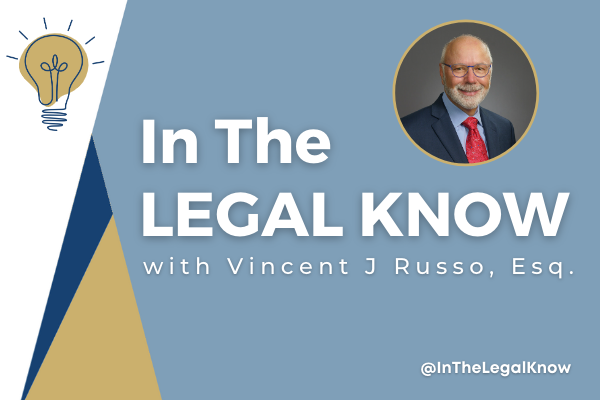Watch “In The Legal Know” with Vincent J. Russo Vincent appeared on CFN Live on…

Make Sure That Your Will or Trust Contains a Personal Property Memorandum
Many times, when a parent passes away, family members argue over their favorite items. Conflict can take place over things like a coffee mug, a piece of jewelry, or a painting. These types of arguments can be eliminated by filling out a personal property memorandum and keeping it with your will or trust.
A Personal Property Memorandum Provides a Detailed Account of Your Wishes
A personal property memorandum is designed to cover who should receive items owned that don’t have an official title record. It’s not a legal document on its own and doesn’t need to be signed in front of witnesses like a will. It becomes legally binding when referenced in your will or trust. Personal property includes furniture, jewelry, art, and other collections, as well as household items like china and silverware. Personal property memoranda may not include real estate or business interests, money and bank accounts, stocks or bonds, copyrights, and IOUs. Those items should already be addressed in your will or trust with named heirs or beneficiaries.
When preparing your memorandum, it’s best to keep things simple. Personal property memoranda generally resemble a list of items with the names of the inheritors. It can be handwritten or typed in a document or spreadsheet, but it should always be signed and dated. While it’s hard to include every personal item, ensure the items specific family members may have expressed interest in are mentioned. You can also convey that personal property items should be sold and proceeds split between loved ones.
Keeping the Peace Between Family Members
All items should be identified in sufficient detail so that argument and confusion about your intentions can be avoided. Complete contact information for heirs should include address, phone, email, and a backup contact if possible. They will be contacted by the executor or trustee of your estate after you pass. Don’t include items that you have already explicitly left in your will or trust, as it may end up conflicting with your memorandum.
The beauty of having a separate list of personal items and their planned distribution is that if you later decide to change who receives what, you simply update your current list or replace the list altogether. You can destroy an old record or maintain signature and dates on each of your personal property memoranda so that it’s easy to identify your most current set of wishes. Updating other aspects of your estate plan are more complex, requiring newly notarized signatures and the destruction of prior copies.
A personal property memorandum for your tangible personal effects is a simple way to address how you want your personal property to be distributed. We would be happy to help you create a legal personal property memorandum along with any other estate planning documents you may need, including wills, trusts, powers of attorney, and advance directives, such as living wills. A custom estate plan can be designed to accomplish unique goals to protect assets, plan for long-term care, qualify for Medicaid, and provide for children with special needs and adults with disabilities. Your plan adapts for every stage of life to prevent financial emergencies due to accidents or illnesses.
Contact our office at 1 (800) 680-1717 and schedule a consultation to discuss your legal matters. We look forward to the opportunity to work with you.




This Post Has 0 Comments